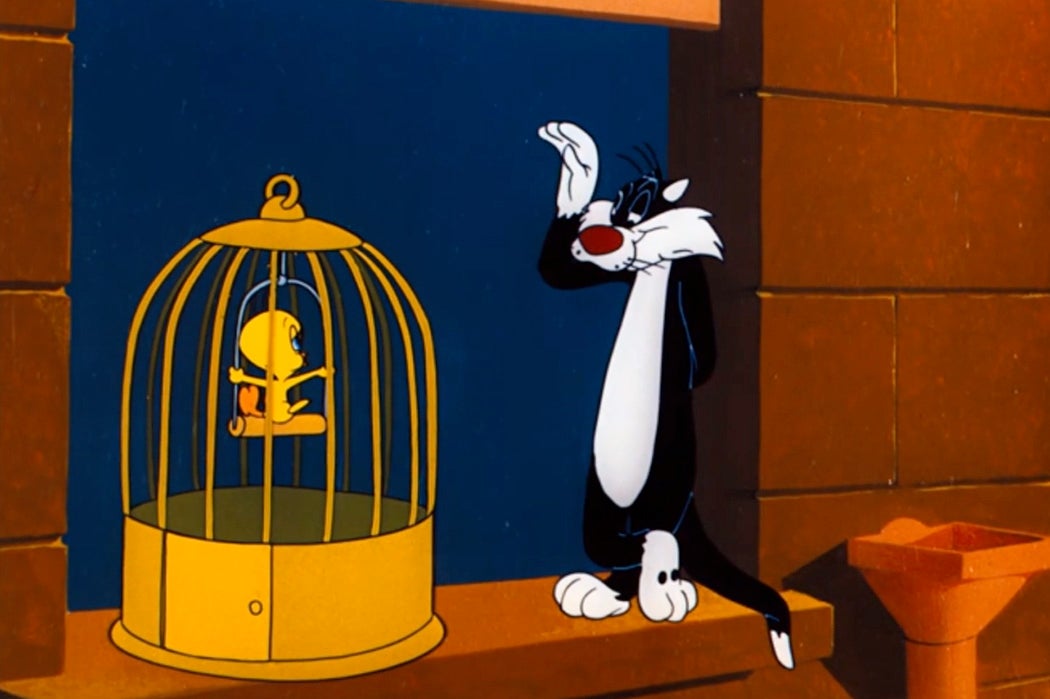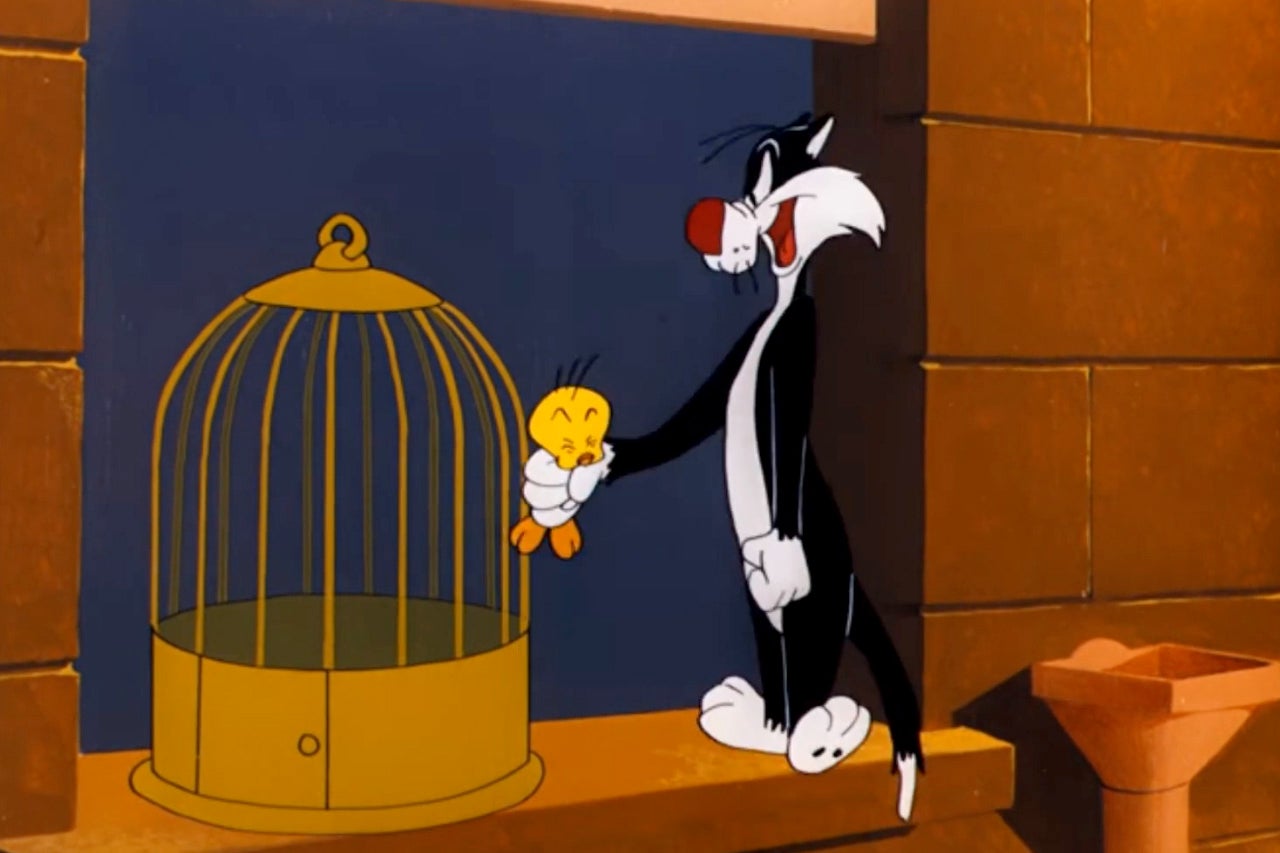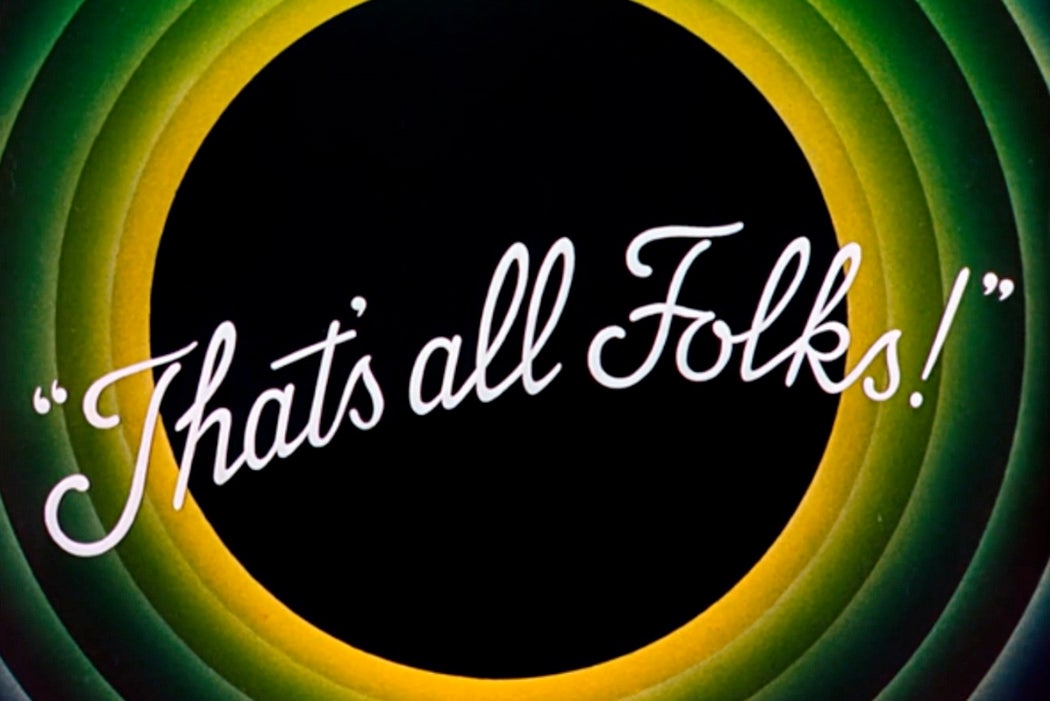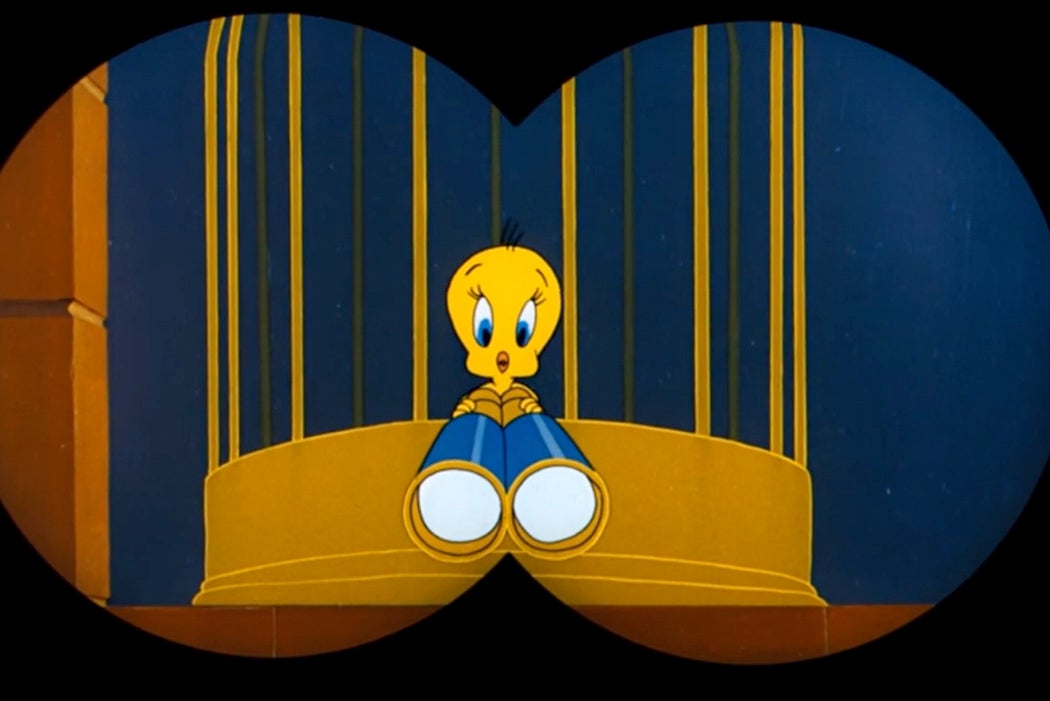One Saturday morning, perhaps as late as the fall of 1980, professor David McNeill met with graduate student Elena Levy at his University of Chicago linguistics lab to watch cartoons.
They were selecting a stimulus for a study. It needed to be simple. It needed to appeal to both children and adults. And it needed to be mostly non-verbal. Saturday morning cartoons seemed like natural candidates. Beyond the fact that it satisfied these basic requirements, neither of these linguists recall anything outstanding about the Golden Age cartoon that they eventually chose: the 1950 Merrie Melodies animated short Canary Row, starring Tweety Bird, Sylvester the Cat, and Granny.
Weekly Newsletter
Already a cartoon classic, Canary Row became an unlikely fixture of linguistics research. Over the years, linguists have used clips of Canary Row to examine hand gestures in at least a dozen languages—and many aspects of signed languages. There are studies that compare gesticulation across languages; studies on gestures by language-learners and by multilinguals; and studies about gestures that accompany signed language. Experts in these topics say the cartoon is the most frequently used study stimulus in their fields.
“It has turned into something other than a cartoon,” says McNeill, “a tool for examining how we live in language.” Canary Row follows a familiar template. In a series of vignettes, Sylvester the Cat repeatedly attempts to catch and eat Tweety Bird by sneaking into a high-rise apartment building, where the canary lives with Granny.

Levy, now at the University of Connecticut at Stamford, showed the cartoon to six university students and took video footage of them telling the story to another person who hadn’t yet seen the cartoon. This basic protocol is similar to other tasks used to study the en vogue topics of discourse and narrative, she says. Working from open-reel tape, Levy transcribed the participants’ speech and gestures, describing their hand movements and coding them according to broad categories.
For the first Canary Row study, published in 1982, the classification focused mainly on iconic gestures that represent ideas in imagistic form and on so-called beat gestures that follow or emphasize the rhythms of speech. Gesture researchers also talk about a few other major functions of gesture, regardless of consciousness or intent. Metaphoric gestures concretize abstract ideas, whereas deictic gestures might indicate an object or location by pointing. Some of these gestures could also work pragmatically, revealing, for example, if a statement is meant as an observation, a request, or a threat.
“There were other people at the psychology building at that time working on coding in other ways,” says Levy. They included University of Chicago psychologist Starkey Duncan, Jr. (father of former Secretary of Education Arne Duncan), who studied all manners of non-verbal communication in face-to-face conversation. Studying free-flowing conversation can provide insight into some easily-overlooked, yet pervasive behaviors, such as how conversants subtlely or not-so-subtlely negotiate when to speak in different conversational settings.
But a standardized video stimulus like Canary Row can ease comparison of gestures between individual storytellers. Compared to open-ended prompts, participants may more reliably gesture at certain moments in a story, such as a common plot point, action, or character emotion—for example, people tended to gesture when describing Sylvester and Tweety looking at each other through binoculars.
A standard stimulus also makes comparison easier between groups and studies. The original plan was to eventually show the cartoon to children, and researchers have recorded retellings of Canary Row by narrators as young as two-and-a-half years old. The comparisons have been carried through new studies across decades.

“For me, the importance of this particular cartoon is simply the possibility of comparing results to published literature, and the familiarity that many in the audience would have with the story,” says Diane Lillo-Martin, a sign linguist and cognitive scientist at the University of Connecticut. “It does successfully elicit narratives that have the kinds of structures we’re looking for, but I’m sure many others would also do so.”
McNeill remains surprised at the quality of Canary Row narrations, and calls the stimulus’s success a stroke of good fortune. A Popeye cartoon was another strong contender, he says, but the structure was more complex than anticipated. From an entire Saturday morning lineup, Canary Row won out by process of elimination. But its popularity in linguistics is also clearly a result of McNeill’s use of it in important work.
Much of that early gesture research—and a decade of careful consideration—was captured in McNeill’s influential 1992 book Hand and Mind: What Gestures Reveal about Thought. A Chicago Reader review of Hand and Mind begins with a detailed description of Canary Row and the video method, explaining McNeill’s results thus:
By examining these videotapes closely—at key points, frame by frame—McNeill has found that the gestures we spontaneously make in conversation are full of meaning… McNeill contends, and his tapes show, that gestures and speech jointly form a single mode of expression stemming from the same underlying mental process. Together they are windows on the mind.
Hand and Mind presented a view of gesture that was contrary to conventional wisdom. Before the work by McNeill (along with former Gesture journal editor Adam Kendon), “most people had thought about gesture as reflecting emotions, affect, or attitude,” says Susan Goldin-Meadow, a psychologist at the University of Chicago who studies gesture and language development. “There was very little research about the content of what that gesture might convey.”
With Hand and Mind, McNeill argued that gesture shares basic cognitive faculties that underpin spoken language abilities. “It’s not just body language,” says sign-language researcher Karen Emmorey, who also studies gesture. She directs the Laboratory for Language and Cognitive Neuroscience at San Diego State University. “It’s really telling you something about language and thought and cognition.”

Over the years, researchers have recut, remixed, or otherwise reused shorter clips of the seven-minute cartoon to study specific gestures. Two scenes in particular that seem to reliably encourage gesture have become popular excerpts. In one, Sylvester swings on a rope between buildings. In the other, Sylvester swallows a bowling ball, then rolls down a hill.
English speakers tend to describe the action with one tumbling diagonal hand motion. Spanish speakers, on the other hand, might gesture first for rolling, and then for downwards motion. This is consistent with the way that manner and path of motion are treated in each language. In English one might say, “He rolled down the hill,” whereas a typical Spanish language description might translate as, “He went down the hill, rolling.”
In addition to English and Spanish, there are Canary Row narrations in Japanese, Korean, Mandarin, Mayan languages, Swahili, and Turkish. Canary Row narrations have been recorded by patients with various language pathologies. Goldin-Meadow recently recorded amputees retelling Canary Row, although she has not yet analyzed the footage. Sign language researchers, many also interested in gesture, have also adopted Canary Row for certain applications.
In one such study, Emmorey and colleagues counted the gestures produced by English-speaking second language learners. In a survey, Italian learners reported that they gesticulated more frequently in English after a year of instruction, but the narrations didn’t bear out their self-assessments. American Sign Language students, on the other hand, produced a greater variety and number of gestures, in some cases even mixing ASL into their English narrations.
The linguists Kim Kurz and Corrine Occhino of the Rochester Institute of Technology recently concluded a large study on adult learners of American Sign Language. It includes Canary Row narration in ASL as told to someone who is deaf. “This kind of classic cartoon lends itself to forcing study participants to switch between viewpoints,” says Occhino, “using body positioning and facial expressions to mark character, depicting their intent or their internal mental states.”

This branch of the study investigates the development of story-telling in a second language. But for many other narrators, the retelling is comfortable and natural: “I think that’s the hidden appeal. You switch on the video and people are doing something they do all the time,” says Bencie Woll of University College London. “People tell stories of what they’ve seen. They recount things.”
Canary Row is probably the most common story in gesture and sign language research, but it is not the only piece of popular entertainment that researchers have appropriated for similar purposes. McNeill has also used Hitchcock’s Blackmail, and found that the thriller promoted relatively more metaphoric gestures. Levy has used comics featuring The Hulk and The Thing, watching participants point to the combatants on the comic book cover. Silent clips of Charlie Chaplin have a special appeal when comparing deaf subjects to those who are not, says Woll, because the viewers’ experiences stimuli are culturally common to both hearing and deaf people, are intrinsically visual, and provide a narrative which observers can then represent in their own language. Another popular prompt in the field is the wordless children’s book Frog, Where Are You? by Mercer Mayer, author and illustrator of the Little Critter and Little Monster series.
Some gesture researchers have selected or created video to try to capture very specific types of gestures. And while retellings in a laboratory can be naturalistic, they do not address the full range of human gestures. Other researchers, like Kendon, have spent careers outside of a lab, observing gesture in a variety of quotidian interactions and settings.
Kendon has never used Canary Row in his own research. “It has its place and has proved very useful,” he says. “But it has its limitations, as all methodologies do, and there are many other ways to study gesture!” A sense of the breadth of gesture research is evident in Kendon’s 1997 review, which includes many references to McNeill’s work, and other overviews. Other types of investigations report that congenitally blind speakers produce gestures that are similar to sighted speakers, and suggest that gesture can support general education, second-language learning, and mathematical reasoning.
McNeill had no attachment to Tweety and Sylvester before he began using Canary Row in research, and he admits he remains mostly indifferent to the characters. “Still, I think my sympathy for Sylvester has grown and my impatience with Tweety has as well,” he says. “Sylvester and Tweety are stock figures but Granny has a vitality that could be someone real.”
Familiarity is a decent explanation for Canary Row’s enduring scientific success in many respects. Participants seem comfortable with the retelling task, and enthusiastic about the cartoon, even across cultures and eras. “My impression was always that it was something of a convenience, but it worked,” says Goldin-Meadow. “People respond well to it. That’s why we use it.”








